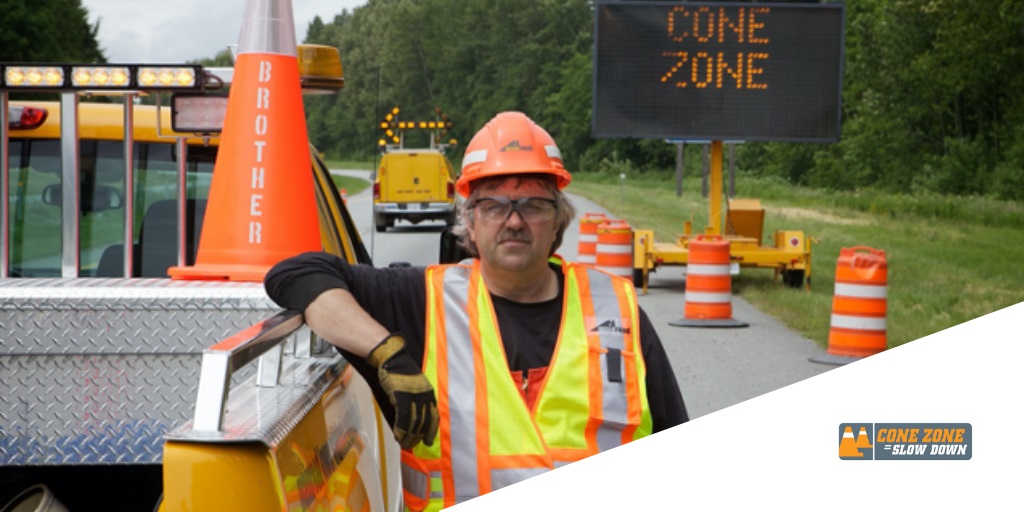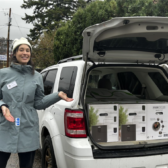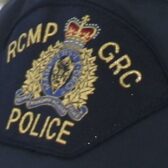Cone Zone campaign calls on West Kootenay/Boundary drivers to slow down to keep roadside workers safe
Spring and summer are busy times for construction and other road-related activity, which brings an increased safety risk for roadside workers in the West Kootenay/Boundary region.
To help reduce the risk, the 12th annual province-wide B.C. Cone Zone campaign launches today with a call for drivers, employers, and workers to do their part to prevent injuries and deaths of roadside workers.
The campaign reminds Nelson drivers to slow down when approaching a Cone Zone – an area set up by roadside workers to protect themselves and drivers from injury and death.
WorkSafeBC statistics show two roadside workers in the province were killed last year and 31 were injured and had to miss work after being hit by a vehicle. Over the last decade, 12 roadside workers lost their lives and 221 missed time from work due to injury.
“That’s 233 people — mothers, fathers, friends, work colleagues, and neighbours,” says Trace Acres, Road Safety at Work program director and spokesperson for the Cone Zone campaign.
“Every roadside worker in (West Kootenay/Boundary) and around the (region) deserves to make it home to their family at the end of their shift without injury.”
Roadside workers are more than road maintenance and construction crews. They’re also first responders, municipal workers, traffic control persons, landscapers, tow truck operators, and others who work at or beside the roadside as part of their job.
The campaign aims to raise awareness of the dangers roadside workers face. One of the greatest risks is a motor vehicle driving through their workplace.
“Dangerous behaviours like speeding and distracted driving puts them at risk,” Acres says. Employers, workers, and all drivers each need to do their part to help keep them safe.
Obey traffic control persons for everyone’s safety
When entering a Cone Zone, drivers need to slow down, pay attention and follow instructions from traffic control persons, temporary road signs, and traffic control devices. And leave your phone alone, says Acres. “A distraction of even a few seconds can have life-changing consequences.”
He encourages drivers to plan ahead. “Listen to media reports before and during your drive and adjust your route to avoid work zones if possible.”
If there is no speed limit posted in a roadside work zone, observe the regular posted speed limit on the roadway. If there are vehicles with red, blue, or amber flashing lights stopped at the roadside, the province’s “Slow Down, Move Over” law applies.
It requires drivers to slow to 70 km/h if the posted speed limit is greater than 80 km/h. If the posted speed is less than 80 km/h, drivers need to slow to 40 km/h.
When travelling on a multilane road, the law says drivers should always be prepared move over to the left lane and increase the space between their vehicle and the work zone, if it’s safe to do so.
Drivers, workers, employers all have a role in roadside safety
Roadside worker safety is a collaboration between employers, workers, and drivers.
Employers are required by law to ensure safe and healthy workplaces for their roadside workers by providing job specific training, education, and supervision. They need to ensure their workers understand the hazards related to working at the roadside.
For their part, roadside workers need to know how to identify hazards and assess risks. They need to follow safe work procedures, including work zone set-up and take-down. They also need to wear appropriate high-visibility clothing and other personal protective equipment. They’re required to report unsafe work conditions to their supervisor.
ConeZoneBC.com gives employers and workers online tools and resources to help them work safely in roadside Cone Zones.
The Cone Zone campaign is a joint provincial initiative supported by the Work Zone Safety Alliance of organizations committed to improving the safety of roadside workers. “Until the number of fatalities and injuries is zero, we will continue to take action to protect roadside workers,” says Acres. “We ask all drivers, roadside employers and workers to do the same.”
Major provincial roadside projects for spring/summer 2022
Major provincial projects scheduled and underway that use Cone Zones include:
- Highway 91/17 Upgrade Project
- Broadway Subway Project
- Pattullo Bridge Replacement
- Kicking Horse Canyon Phase 4
- Flood recovery projects (Coquihalla, Fraser Canyon, Malahat Tunnel Hill, Highway 3 etc.)

























